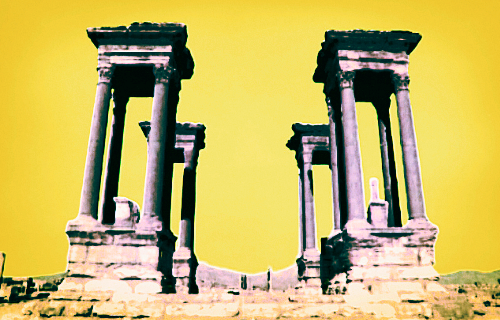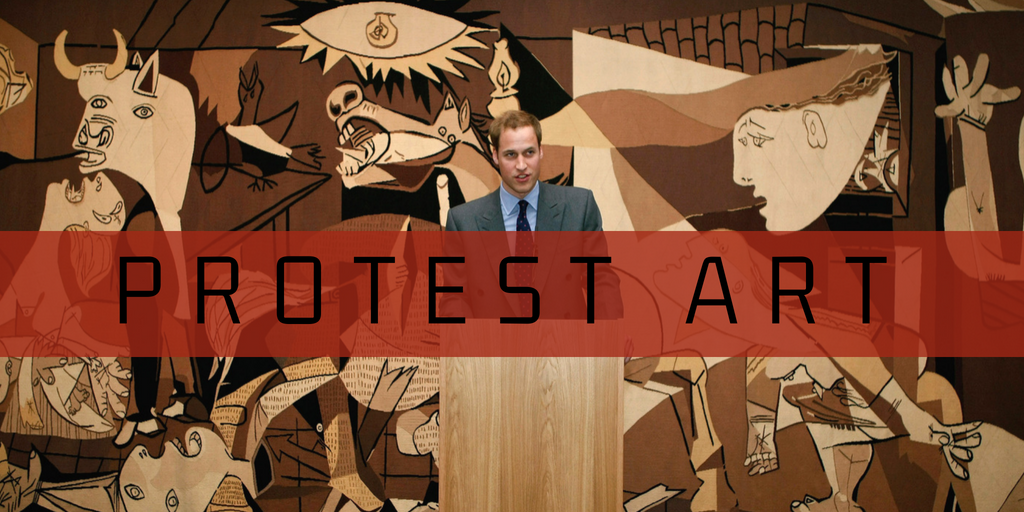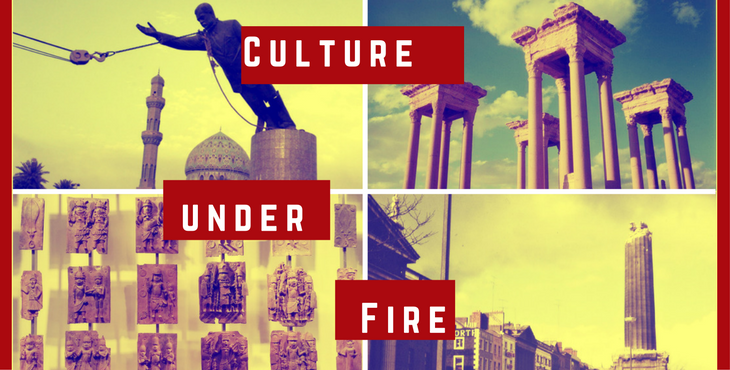Can Technology Revive the Destroyed Past?
Erin L. Thompson on the limits of digital recreation

When the British traveller and missionary William Wright visited the ruins of the ancient city of Palmyra, Syria, in 1874, he brought ropes and grappling hooks ‘to enable me to reach those lofty resting-places of the dead, which all my predecessors had sighed in vain to ransack’. He wanted to climb into site’s tower tombs—elaborate constructions with slots to house up to 300 burials of family members and associates, many sealed with slabs sculpted with portraits.
The acrobatic Wright found to his disappointment that ‘the highest recesses had been ransacked before I scaled them, and that nothing remained but a few mutilated mummies’. He consoled himself by taking a number of skulls, ‘choosing those that seemed most unlike each other’. A fantastically rich city, Palmyra was an oasis in what is now Syria and what was then a crucial stopping place on the caravan routes that brought silk, jade, spices, slaves, and other luxury goods from China and India through the Middle East and on to Rome. Wright was hardly the first to loot the art that Palmyra’s merchant class left behind, but in 2015, site faced an even greater threat: the Islamic State (IS).
IS gained control of the archaeological site Palmyra as a result of its conquest of the neighbouring modern city of Tadmur and its strategic gas fields. In March 2016, Syrian governmental forces re-took Tadmur and Palmyra, but not before IS had publicly executed Palmyra’s retired chief of antiquities, Khaled al-Asaad, and detonated explosives in the site’s Temples of Baal Shamin and Bel. Built, respectively, in the first and second centuries CE, the temples were some of the best preserved structures from Roman antiquity existing anywhere in the world.
IS’s destruction of archaeological materials was widely covered in the Western media. Many people were inspired by the destruction to begin three-dimensional modelling projects. (Three-dimensional, or 3D, modelling uses computer software to develop a mathematical representation of a 3D surface of an object; you can turn a digital 3D model into a physical object with specialized printing or carving tools directed by this mathematical model.) These projects were praised for preserving threatened sites, reconstructing destroyed ones, and disseminating knowledge of the past cheaply and easily all over the globe. But is it really so simple?
Few of the people involved in the digital projects that focus on archaeological sites in Syria and Iraq are themselves Syrian or Iraqi. Instead, the projects are mostly begun by and controlled by Americans or Western Europeans. As William Wright’s casual looting of Palmyra shows, Western attention has not always been good for either the historical or modern residents of Middle Eastern sites.
Digital recreations of Middle Eastern heritage sites often leave out certain things. These are problems, because we as viewers are not very good at imagining things we can’t see.
Very few digital recreation projects include images of humans. The empty spaces of digital reconstructions can appear ready for conquest, in the same way, for example, that early European settlers imagined the landscape of America to be empty. Paintings, drawings, and later photographs showed vast stretches of land without any evidence of the Native Americans who already lived there. Similarly, the emptiness of digital reconstructions leaves the viewer free to claim those spaces for his or her own interpretation and identification.
Most digital recreations only show the site in the past, at what is believed to be its best moment. But this leaves out the way the meaning of the site changed through time. For example, villagers lived in the courtyard of the Temple of Bel at Palmyra until 1929 when a French archaeological expedition cleared the ruins of Palmyra and moved their inhabitants to Tadmur. This means that the parents of some living Syrians were born in the shadow of the temple IS destroyed. You don’t learn this from the digital recreations.
Finally, most of the current digital projects focus on pre-Islamic heritage, including the ancient Roman architecture of Palmyra. But IS mostly targeted shines, mosques, churches, cemeteries, and other sacred sites important to Christians, Yazidis, and other branches of Islam. The focus on pre-Islamic heritage reflects Western priorities.
So, what’s the problem with these absences? Digital projects won’t ‘replace’ actual sites. But they might change how we interpret these sites.
Think about visiting a heritage site as a tourist. You get conflicting information from your guidebook, your tour guide, and the things you overhear from other guides and visitors. You get a sense of local attitudes toward the site. Is it one that inspires national pride, with groups of schoolchildren trooping through, or is it one that is little known? Is it a protected, gated-off sources of tourist revenue, or is it open and casually marked by a few faded signposts?
But if you ‘visit’ a digital model, you almost always get only one interpretation of the site. There’s no room for disagreements or alternate theories—or even any evidence that different people interpret the site differently. This is strange, since digital tools allow us to put in all sorts of information. There could be different versions of a site, different reconstructions at different moments in time, even interviews with people who lived nearby or visited before the destruction.
We can build digital presentation frameworks that allow users to add annotations and comments. This would mean both that scholars specializing in that object or site could update the digitalization to keep pace with new research, but also that others—tourists, locals, anyone—could add their thoughts. The viewer of this type of presentation might be overwhelmed with debate about particularly controversial aspects of the past, but would always have the sense that multiple other viewers and interpretations exist.
But who should be responsible for making sure digital reconstructions contain a wide range of voices? Should we expect people who live near the heritage sites to contribute to digital projects that are open to the public? That’s a problem for Palmyra. IS’s destruction of heritage sites in Syria and Iraq was paired with a refugee crisis. To those forced to flee their homes, the cultural sites that form part of their personal and national identities become yet more precious, and their destruction more painful. Refugees often lack the time and resources necessary to contribute to digital reconstruction projects.
But their voices are crucial. Heritage sites aren’t very valuable on their own. They offer only empty, uninhabitable buildings, graves, and heaps of battered stones. The past lives only in our imaginations. Heritage sites have value only in relation to how we see them. We must be all the more careful, then, to treat these sites in a manner that does not destroy this value.

The Source Code
This essay is based on the article ‘Legal and Ethical Considerations for Digital Recreations of Cultural Heritage’, by Erin L. Thompson, published in Chapman Law Review.





